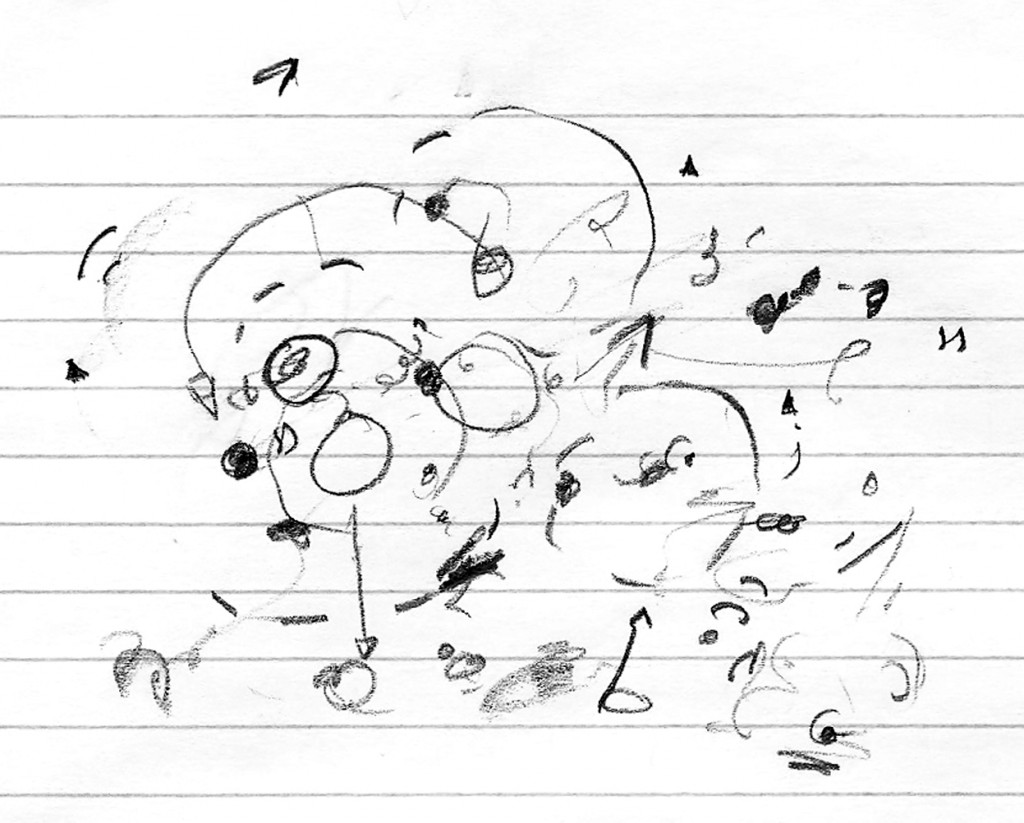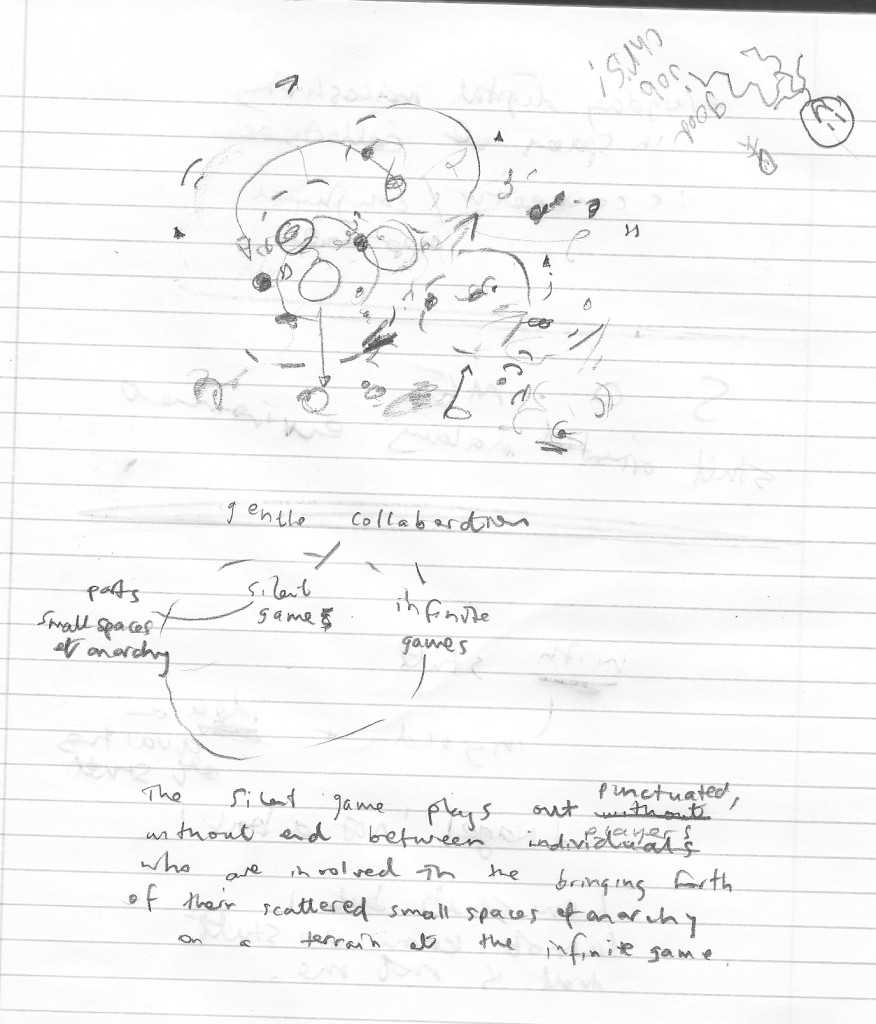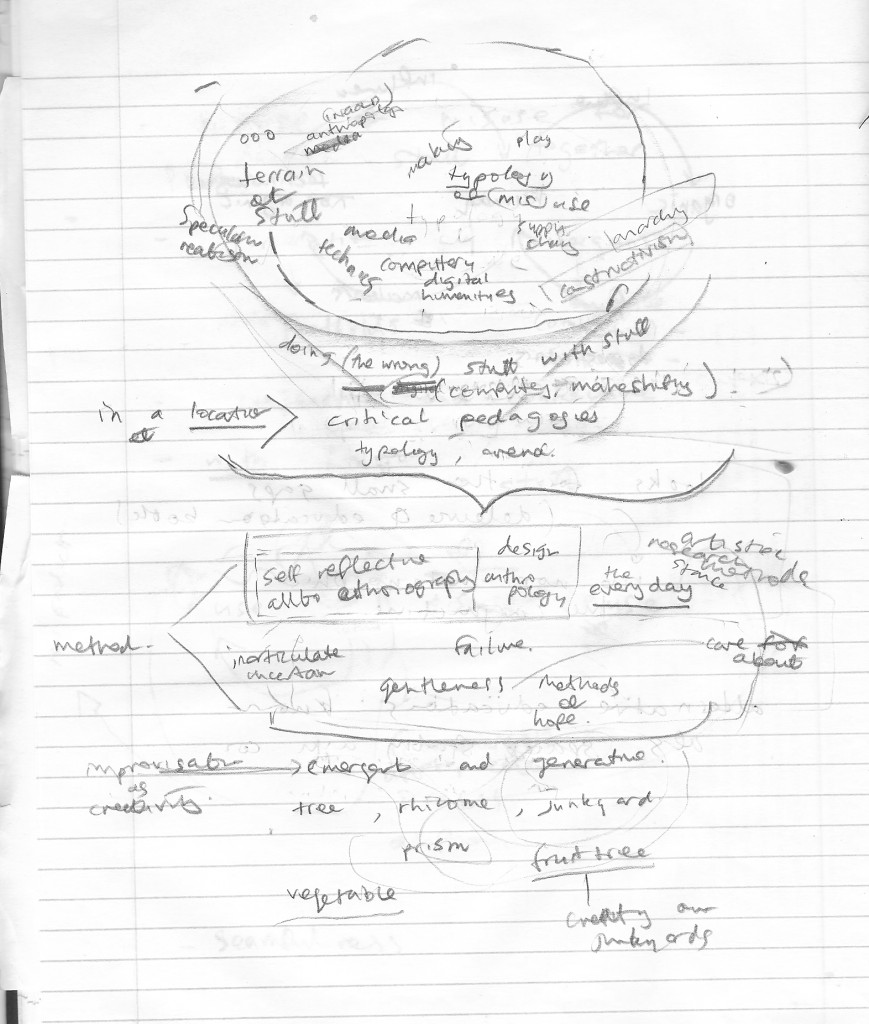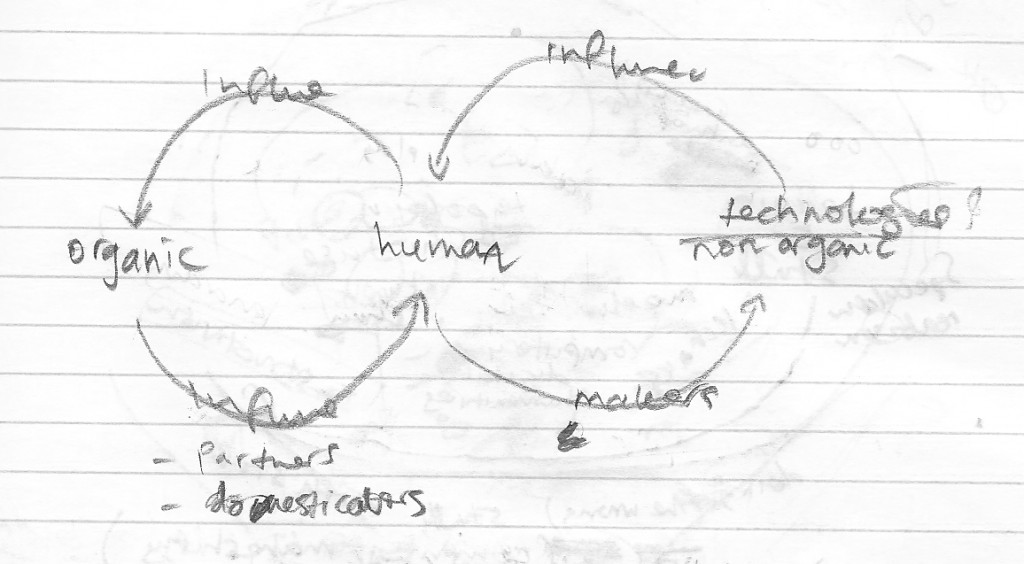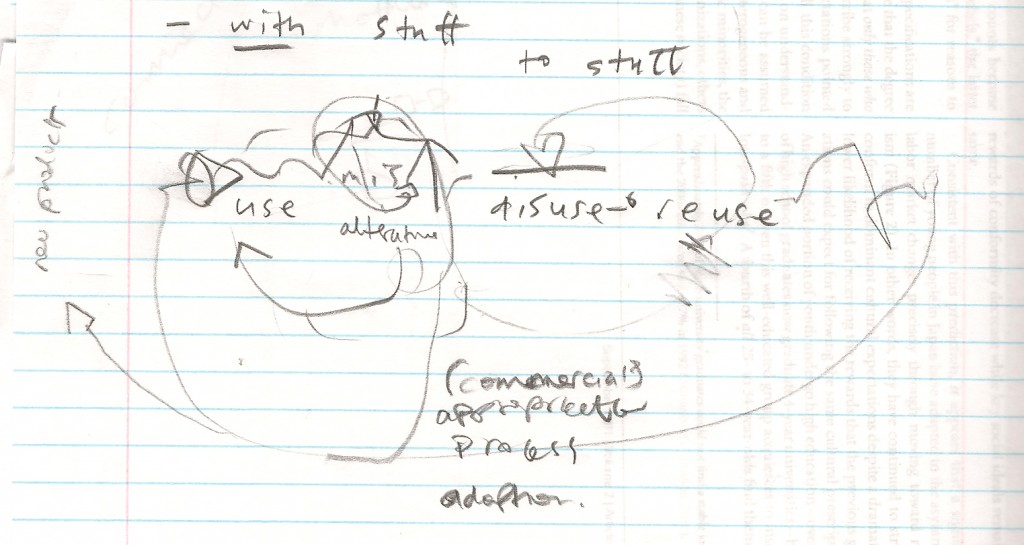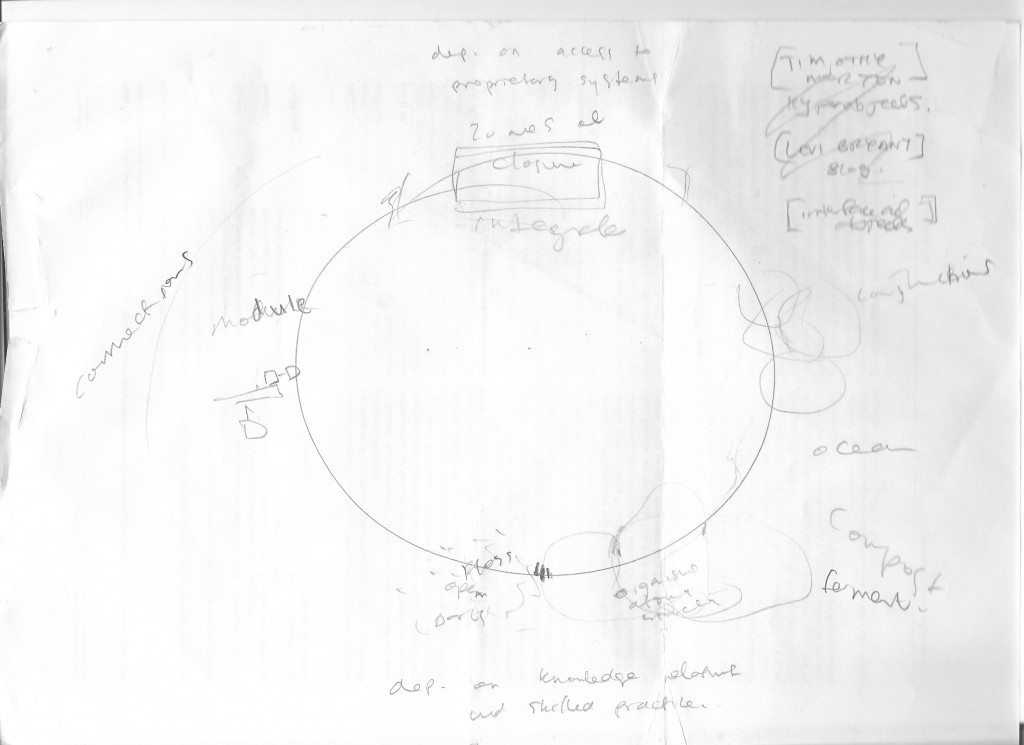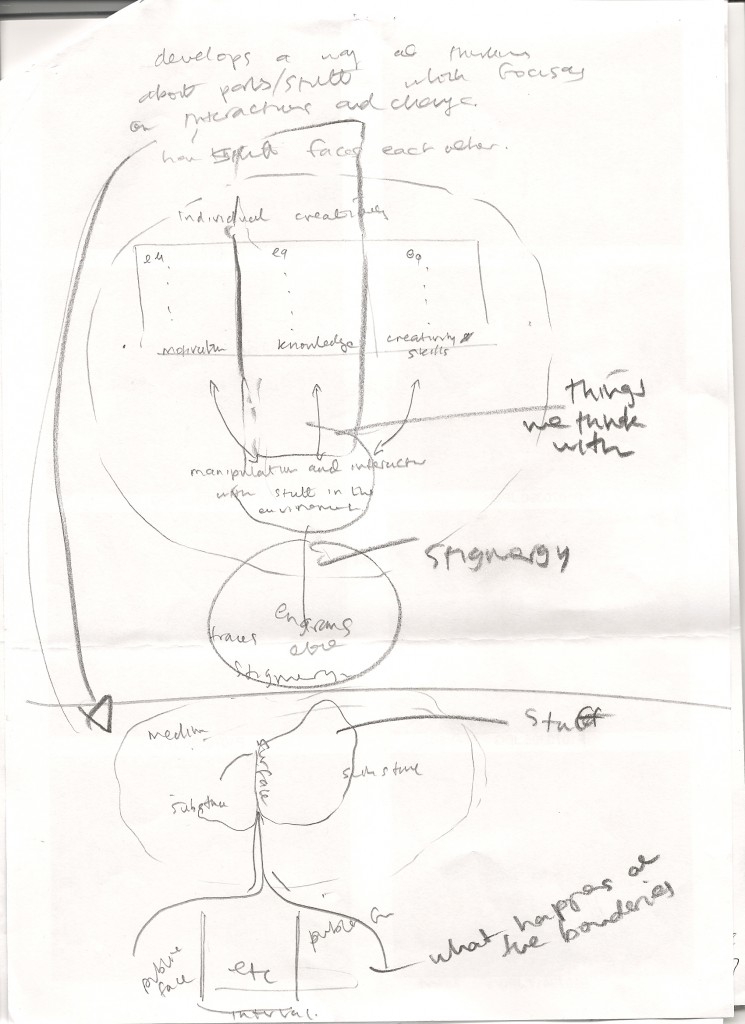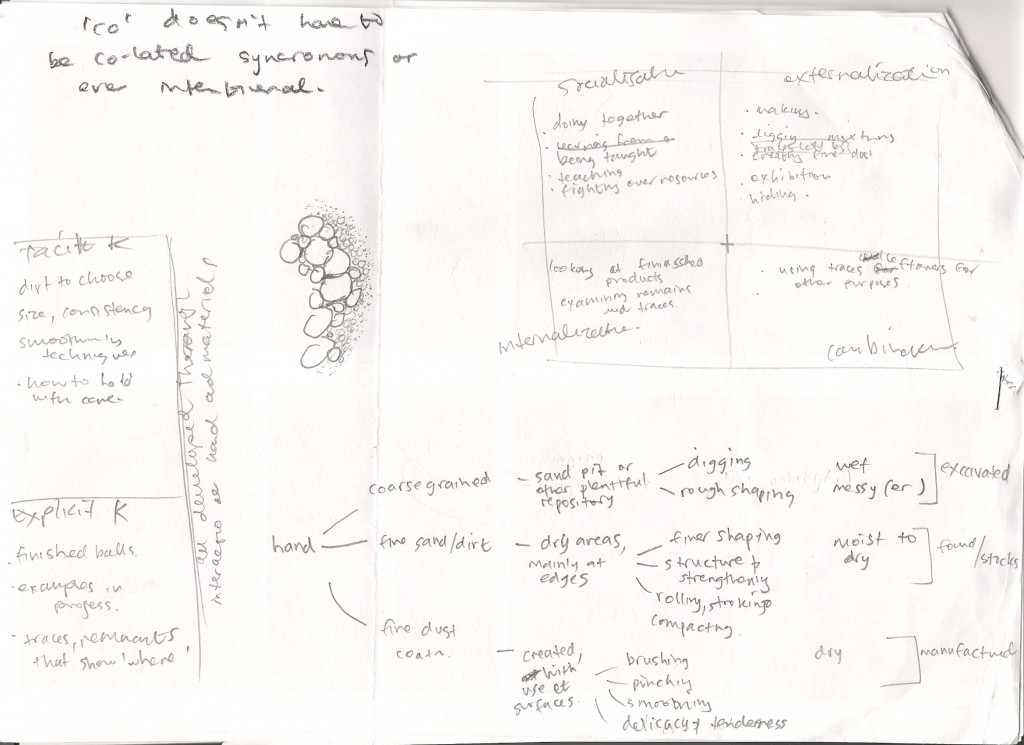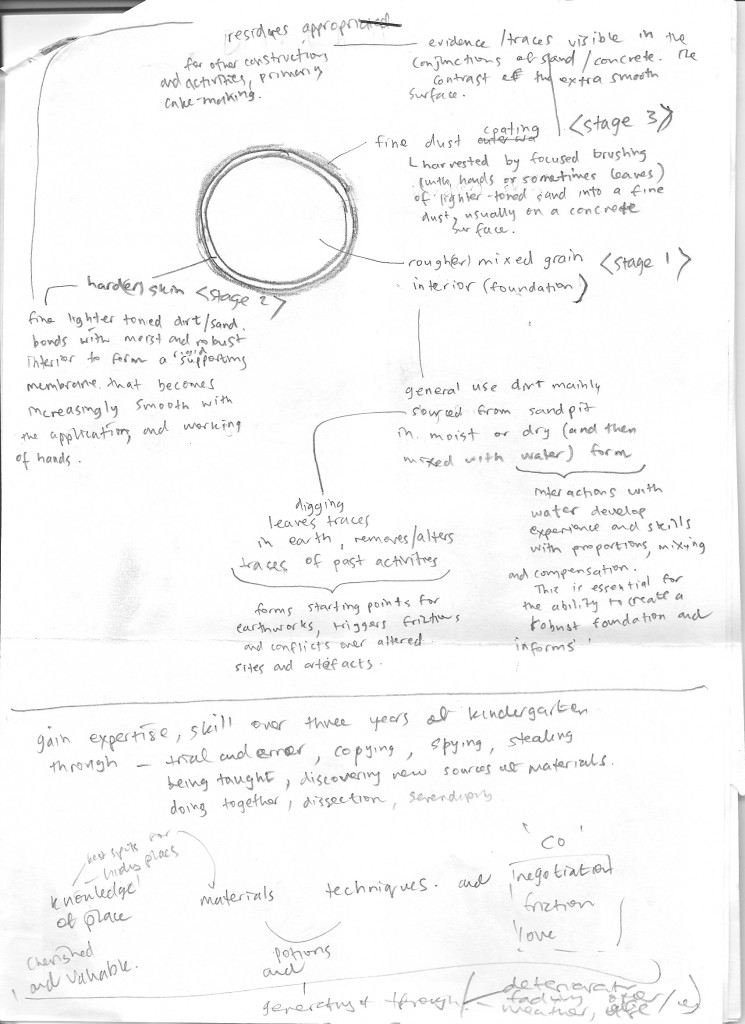Gentle collaboration is a viscous fluid. Scattered small spaces of anarchy are where individuals go about the non-intentional design of their everyday environments. The silent game plays out continuously in accumulations of interactions (to use Chia and Holt’s 2009 term) between individuals on a terrain of the infinite game. In gentle collaboration it is not possible to discern starts and ends, but punctuations, flows, localized swellings, and fluid terrains are always already becoming the non-intentional landscape. This view values the individual, recognizes localized swellings, and provides a lens through which to begin to understand the wider system wisdom in terms of wayfinding rather than explicit strategy (see e.g. Chia and Holt’s 2009 discussion of ‘the silent efficacy of indirect action’). This concept invites comparison with other larger scale modes of collaboration such as (for example) commons-based peer-production (Benkler, 2011) and stigmergic processes (e.g. Elliot, 2006).
References
Benkler, Y. (2011) The Penguin and the Leviathan: How Cooperation Triumphs Over Self Interest. New York: Crown Business.
Chia, R.C.H. and Holt, R. Strategy Without Design: The Silent Efficacy of Indirect Action. Cambridge: Cambridge University Press.
Elliot, M. (2006) Stigmergic collaboration: The evolution of group work. M/C Journal. 9 (2). Available from: http://journal.media-culture.org.au/0605/03-elliott.php . [Accessed: 18 May 2014].
